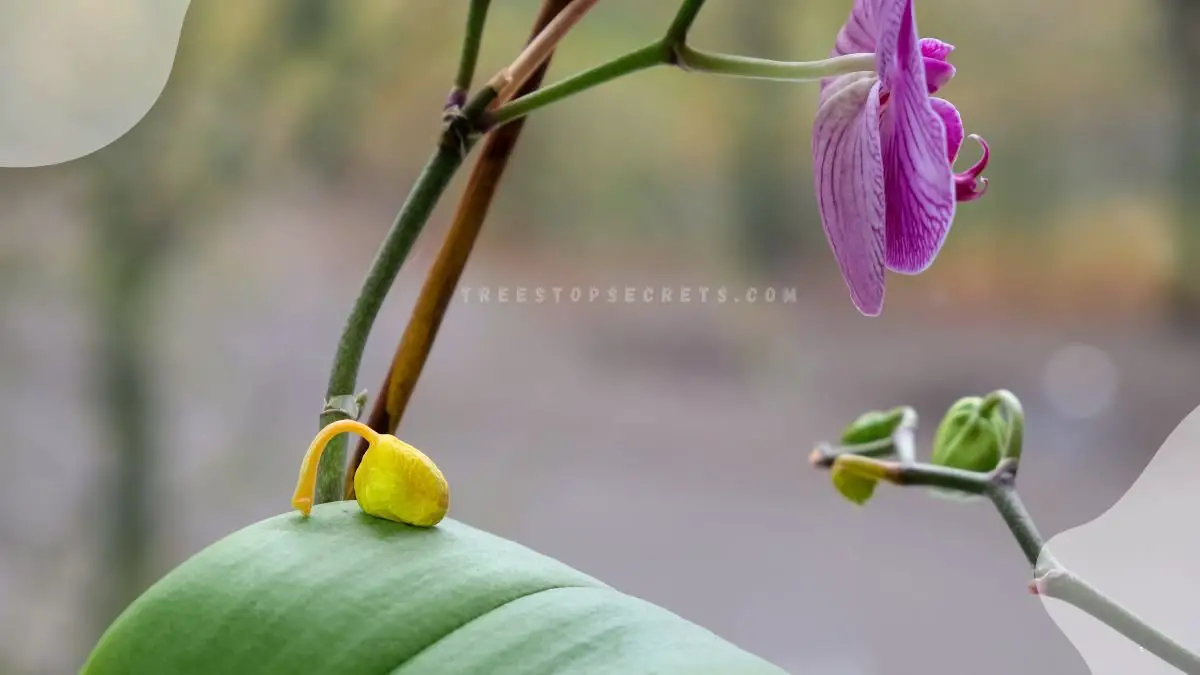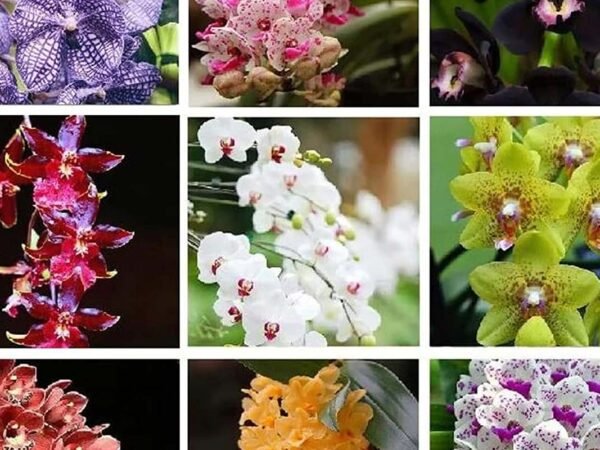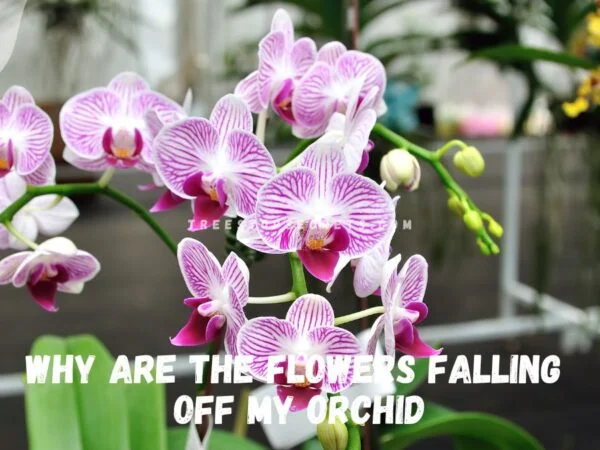When it comes to orchids, the sight of flowers falling off, absent blooms, natural bloom loss, seed, and fungi can be disheartening. Understanding the reasons behind this phenomenon is crucial for orchid enthusiasts. From common orchid problems like improper watering practices to inadequate light exposure, various factors contribute to this issue. However, with the right knowledge and care, you can prevent your orchid's flowers from prematurely dropping, ensuring a longer-lasting and vibrant display.
Key Takeaways
- Understanding the Causes: Learn why orchid flowers fall off, including common reasons and environmental factors.
- Prevention is Key: Take actionable steps to prevent early flower loss by addressing physical stressors and ensuring orchid health.
- Environmental Awareness: Be mindful of the surroundings of your orchids to maintain optimal conditions for flower retention.
- Regular Care Routine: Implement advanced care techniques, especially for Phalaenopsis orchids, to promote flower longevity.
- Stay Proactive: Monitor the health of your orchids regularly to detect any signs of disease or stress early on.
- Consistent Care Yields Results: By following preventive measures and providing proper care, you can enjoy beautiful orchid blooms for longer periods.
Why Orchid Flowers Fall
Natural Cycle
Orchids naturally drop flowers as part of their natural cycle to conserve energy. This process allows the plant to redirect resources for future growth. During the dormancy phase, orchids rest and prepare for the next blooming cycle. They focus on root and leaf development to regain strength.
Staying patient during the dormancy phase is crucial as it is a vital period for orchids to recover. Orchids regain strength during this time by storing nutrients and energy for future blooms. Providing proper care, such as adequate watering and light, is essential for orchids during dormancy.
Stress Factors
Identifying stress factors that trigger premature flower dropping is key to maintaining healthy orchids. Issues like overwatering, inadequate light, or extreme temperatures can stress orchids, leading to flower loss. Stress negatively affects the overall health of orchids, weakening their immune system and making them more susceptible to diseases.
Understanding how stress impacts orchids helps in taking proactive measures to address these issues. By reducing stress factors through proper care practices like maintaining consistent watering schedules and providing sufficient light, you can promote optimal health for your orchids.
Environmental Impact
Environmental factors play a significant role in determining the health and blooming of orchids. Inadequate light, improper humidity levels, or poor ventilation can adversely affect the growth of orchids. Providing a suitable environment with the right balance of light, humidity, and airflow is crucial for orchid growth and blooming.
Creating an ideal environment for orchids involves understanding their specific needs and adjusting conditions accordingly. By mitigating negative environmental impacts through measures like using grow lights or humidifiers, you can ensure that your orchids thrive and bloom successfully.
Common Reasons for Falling Flowers
Overwatering Effects
Overwatering can cause root rot in orchids, leading to flower dropping. To prevent overwatering, allow the soil to dry between watering sessions. Signs of overwatering include yellowing leaves and mushy roots.
Light and Temperature
Insufficient light can result in poor blooming in orchids. Optimal conditions include bright, indirect light and temperatures between 65-85°F. Adjust lighting by placing orchids near windows or using grow lights.
Root Issues
Root problems such as root rot or lack of aeration contribute to orchid flower dropping. Address these issues by repotting in well-draining media and trimming unhealthy roots. Healthy roots are essential for nutrient uptake and overall plant health.
Environmental Causes
Temperature Fluctuations
Temperature fluctuations can disrupt the blooming cycle of orchids, causing flowers to fall off prematurely. Sudden drops or spikes in temperature can shock the plant, leading to flower dropping. To protect orchids from temperature changes, maintain a consistent environment and avoid placing them near drafty windows or heating vents. The ideal temperature range for orchid care is between 60-80°F, ensuring stable conditions for healthy growth.
Chemical Exposure
Chemical exposure poses a risk to orchid health, potentially causing flowers to drop due to stress or toxicity. To minimize exposure, avoid using pesticides or fertilizers near orchids, opting for organic alternatives instead. The risks associated with chemical exposure in orchids include stunted growth, discoloration, and wilting of flowers, impacting overall plant vitality.
Incorrect Lighting
Incorrect lighting can have detrimental effects on orchid blooming, leading to premature flower dropping. Providing inadequate light can hinder photosynthesis and nutrient absorption, affecting flower production. To ensure healthy growth, place orchids in areas with indirect sunlight or use artificial grow lights to supplement natural light. Proper lighting plays a crucial role in preventing flower dropping and promoting robust blooming cycles.
Physical Stressors
Sudden Relocation
When orchids experience sudden relocation, they undergo stress, causing flowers to fall off. To minimize this impact, acclimate orchids gradually to new environments. Stable conditions are crucial for maintaining orchid health.
Watering Mistakes
Common watering mistakes can harm orchids and lead to flower dropping. Avoid overwatering or underwatering by checking the soil moisture level regularly. Proper watering practices are essential for optimal orchid care.
Cold Conditions
Cold temperatures can negatively affect orchid blooming, resulting in dropped flowers. Protect orchids from cold by placing them away from drafts or chilly areas. Exposing orchids to cold conditions poses risks and can hinder their growth.
Health and Disease
Yellow Leaves
Yellow leaves in orchids after flower dropping can signal issues like overwatering or nutrient deficiencies. Regularly check leaves for discoloration to catch problems early. Proper watering and fertilizing can prevent yellowing.
Root rot in orchids is often caused by overwatering and poor drainage. Symptoms include mushy, discolored roots. To avoid root rot, use a well-draining potting mix and water orchids only when the top inch of soil is dry.
Root Rot
Root rot in orchids can lead to wilting, stunted growth, and eventual death if left untreated. Prevent root rot by ensuring proper air circulation around the roots and using pots with drainage holes.
Premature falling of orchid flowers may be due to environmental stressors like temperature fluctuations or improper light exposure. Address this issue by maintaining stable growing conditions and avoiding sudden changes.
Premature Falling
Early identification of premature falling in orchids is crucial to prevent further damage to the plant. Check for signs like weak stems or sudden drop-offs. Adjust care routines to support healthy blooming cycles.
Preventing Early Flower Loss
Optimal Care Tips
Taking care of orchids is essential for maintaining healthy plants. Provide adequate light, water, and humidity to ensure optimal growth. Avoid overwatering, as it can lead to root rot and flower dropping. Use a well-draining potting mix specifically designed for orchids.
- Ensure orchids receive indirect sunlight to prevent leaf burn.
- Water orchids only when the top inch of the soil feels dry to the touch.
- Maintain humidity levels between 40% to 60% for ideal growth conditions.
Avoiding Common Mistakes
Avoid placing orchids in direct sunlight, which can scorch the leaves. Prevent using tap water with high mineral content that can harm orchids. Ensure proper ventilation around orchids to prevent fungal infections.
- Do not repot orchids during the blooming period to avoid stress.
- Avoid using cold water for watering as it can shock the plant's roots.
- Refrain from overcrowding orchids to prevent competition for resources.
Monitoring Plant Health
Regularly checking your orchids' health is crucial for preventing issues like flower dropping. Look out for yellowing leaves, pests, or signs of disease. Monitor temperature fluctuations and adjust care accordingly based on seasonal changes. Inspect roots for any signs of decay or damage.
- Check for pests like aphids and spider mites on a weekly basis.
- Monitor temperature levels to ensure they remain consistent for orchid health.
- Examine roots carefully during repotting to identify any issues early on.
Special Focus on Phalaenopsis Orchids
Care Guide
Caring for phalaenopsis orchids involves providing adequate light, water, and proper ventilation. Use a soilless potting medium to ensure good drainage. Water the orchid when the top inch of the medium feels dry to the touch.
Prospective orchid owners should place their orchids in a spot with bright, indirect light. Avoid direct sunlight, as it can scorch the leaves. Maintain a temperature range of 65-85°F for optimal growth.
- Light: Bright, indirect light
- Water: When top inch of medium is dry
- Ventilation: Ensure proper airflow
Blooming Patterns
Different orchid species exhibit unique blooming patterns. Some orchids bloom once a year, while others bloom multiple times throughout the year. Factors like light, temperature, and humidity influence blooming cycles.
Recognize the signs of an orchid blooming cycle by observing the emergence of flower spikes. Appreciate the beauty of each bloom and understand that each flower has a finite lifespan before wilting.
- Frequency: Varies among species
- Influencing factors: Light, temperature, humidity
- Recognition: Flower spike emergence
Troubleshooting Tips
When faced with common orchid care issues like flower dropping, take immediate action. Check for signs of overwatering or underwatering. Adjust watering frequency and inspect the roots for any signs of rot.
Effective troubleshooting involves identifying the root cause of problems and taking corrective measures promptly. Provide adequate ventilation to prevent fungal infections and maintain proper humidity levels.
- Overwatering: Adjust watering frequency
- Underwatering: Increase watering frequency
- Root rot: Inspect roots for signs of decay
Advanced Care Techniques
Bud Protection
Protecting orchid buds is crucial for successful blooming. Methods such as shielding them from direct sunlight and ensuring adequate humidity are effective. By safeguarding developing buds, you can enhance the chances of a beautiful bloom. It is essential to protect buds to maintain the overall health of your orchid.
Enhancing Bloom Longevity
To extend the lifespan of orchid blooms, consider strategies like proper watering and placing the plant in a suitable location. Understanding the factors that influence bloom longevity, such as temperature and light levels, is key. Prolonging the blooming period allows you to enjoy your orchids for a more extended time.
Stress Prevention
Preventing stress in orchids is vital for healthy blooming. Create a stress-free environment by maintaining consistent watering schedules and providing adequate ventilation. Stress prevention plays a significant role in ensuring the overall health and vitality of your orchids.
Conclusion
Summary
Understanding the reasons behind your orchid's flowers falling off is crucial to providing the best care for your plant. Whether it's due to environmental factors, physical stressors, or health issues, being proactive in preventing early flower loss can significantly impact the longevity and beauty of your orchid. By implementing advanced care techniques, especially tailored to specific orchid types like Phalaenopsis, you can ensure that your plant thrives and blooms vibrantly.
Incorporating these preventive measures and specialized care practices will not only enhance the health and appearance of your orchids but also deepen your appreciation for these delicate and exquisite plants. Take the time to observe, learn, and implement these strategies to enjoy a flourishing orchid collection. Your dedication will be rewarded with stunning blooms and a thriving orchid garden.
Frequently Asked Questions
Why do orchid flowers fall off?
Orchid flowers can fall off due to various reasons such as environmental stressors, physical damage, or health issues within the plant. Understanding these factors can help prevent premature flower loss.
What are the common reasons for falling orchid flowers?
Common reasons for falling orchid flowers include overwatering, underwatering, exposure to extreme temperatures, inadequate light levels, and nutrient deficiencies. Addressing these factors promptly can help maintain healthy blooms.
How can environmental causes lead to orchid flower loss?
Environmental causes like sudden changes in temperature, humidity levels, or light intensity can stress orchids, leading to flower drop. Maintaining stable growing conditions and proper ventilation can help prevent this issue.
What physical stressors can cause orchid flowers to fall off?
Physical stressors such as rough handling, improper repotting techniques, or accidental damage to the flower spikes can result in premature flower loss. Gentle care during handling and regular maintenance can minimize these risks.
How can I prevent early flower loss in my orchids?
To prevent early flower loss in orchids, ensure they receive adequate light, proper watering, optimal humidity levels, appropriate temperatures, and balanced nutrition. Regularly inspect your plants for any signs of stress or disease and address issues promptly.
Image Source: Paid image from CANVA





